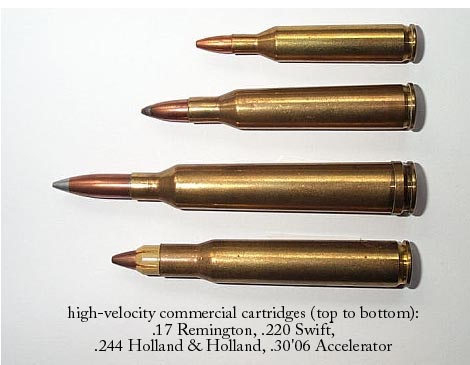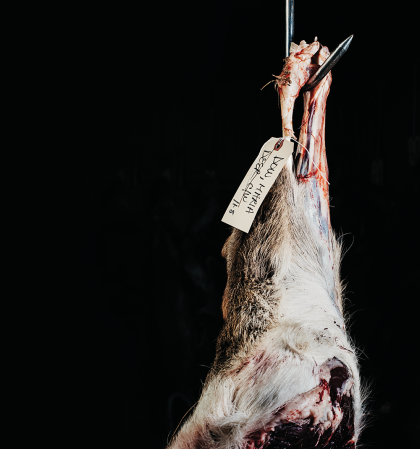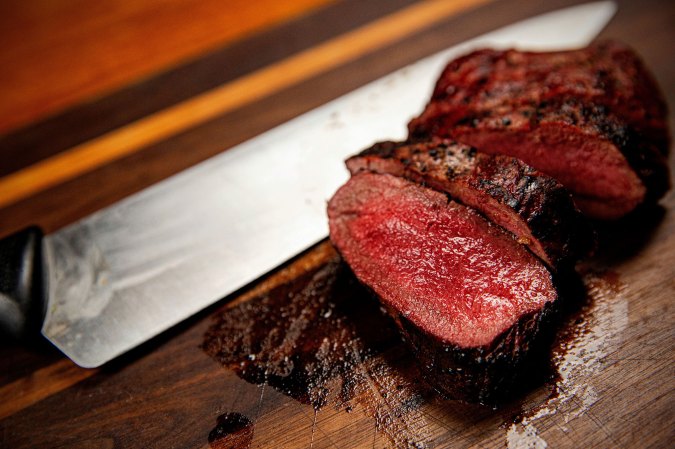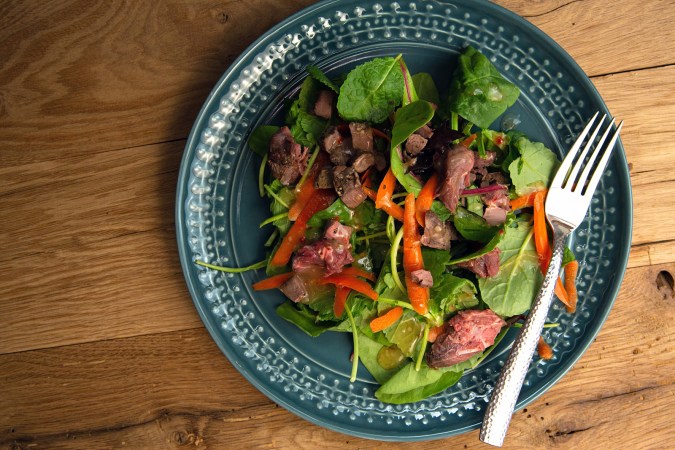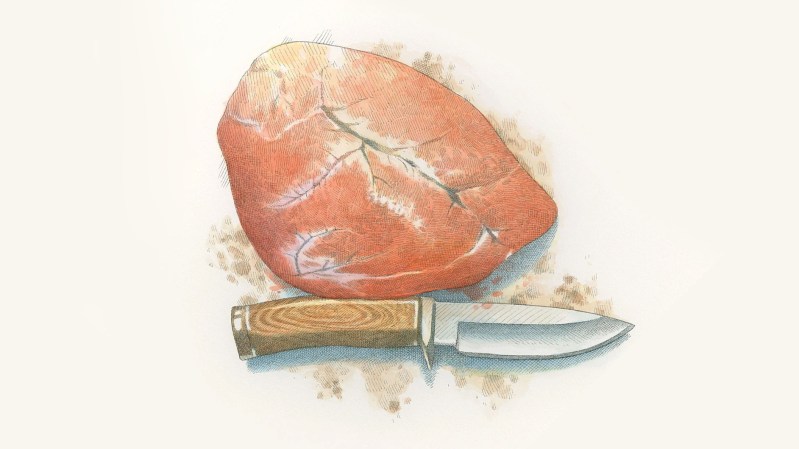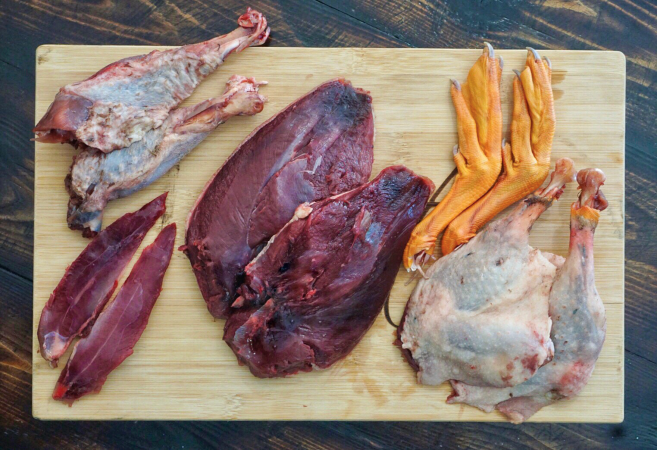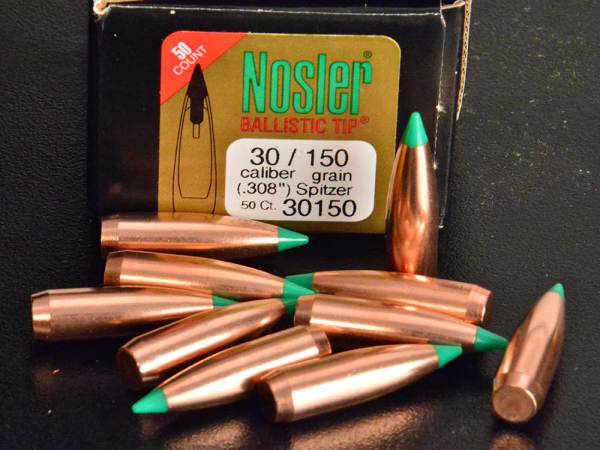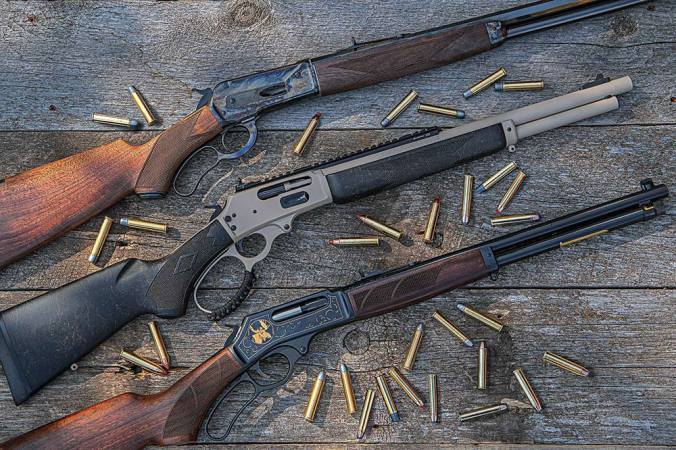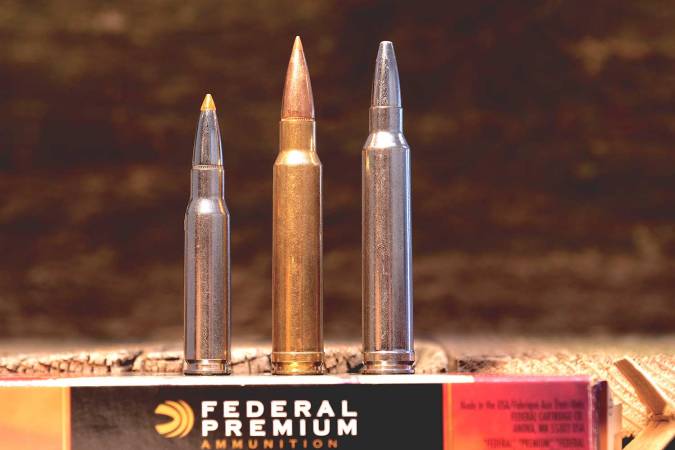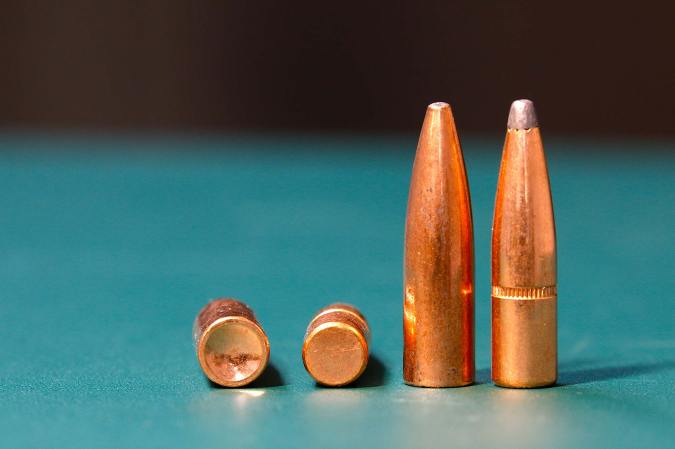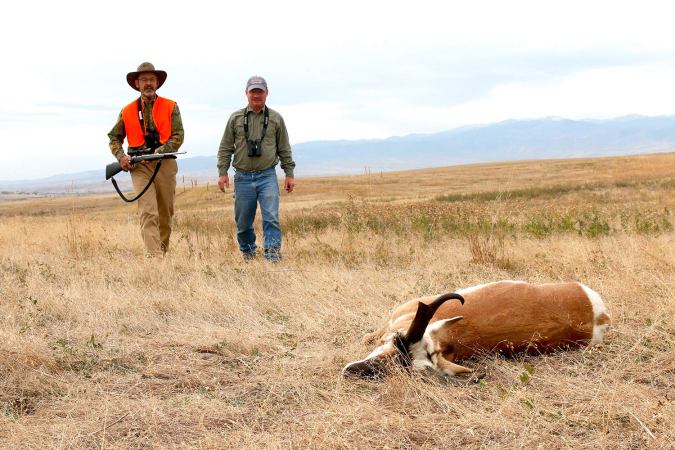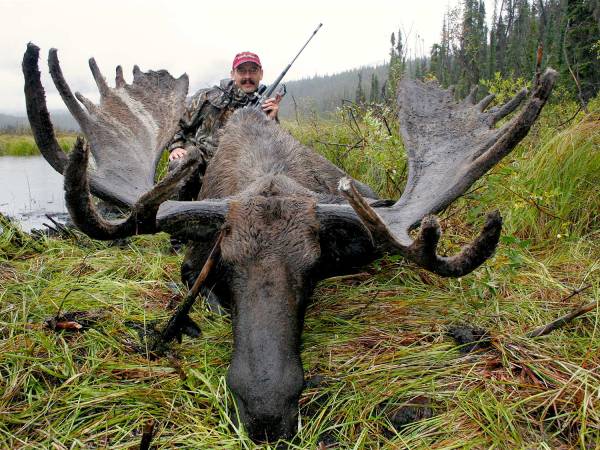It’s been a euphemistic joke in hunting camps that most deer die from “lead poisoning,” meaning the alloyed bullets that end their lives.
That’s no longer quite so funny after a series of studies indicates that hunters’ bullets are not only killing the animals, but fragments of the projectiles are also ending up on dinner tables, mainly in ground venison, where they have the potential to poison spouses and children, too.
That’s the gist of a number of tests of hunter-harvested venison that have been conducted in several states over the last few months. These tests on meat that’s been commercially processed and donated to food banks indicate detectable levels of lead in a high percentage of samples.
This residual lead apparently is from high-velocity bullets that fragment into microscopic particles that aren’t removed when the animal is butchered. A neurotoxin that can affect mental and physical development, lead is especially harmful to small children and pregnant women.
The first study, conducted on a hunch by Dr. William Cornatzer, a dermatologist from Bismarck, North Dakota revealed that nearly 60 of the 100 one-pound packages of ground, frozen venison tested contained enough lead fragments to be detected with a high-definition CT scan.
“I was shocked at those results,” says Cornatzer, who conducted the test after seeing x-rayed photographs of hunter-killed deer carcasses that revealed microscopic lead fragments two to three feet away from the entrance and exit wounds. “Under the x-ray, it looked like somebody had sprinkled black pepper all over the carcasses, only the black flakes were lead, not pepper. I’m a hunter, and I thought, ‘Cripes, have I been feeding my family lead for all these years?’ It seemed like something that needed more investigation.”
It wasn’t until Cornatzer took his study results to North Dakota’s Department of Health that the public-health implications of lead in venison started affecting public policy.
The health department conducted a more randomized test this spring and again found detectable levels of lead in a high percentage of samples from food banks, after which the agency halted distribution of venison from state-sponsored pantries. Shortly after that, Minnesota’s Department of Agriculture sampled meat from a number of commercial meat processors and found lead in about 20 percent of venison. It, too, pulled meat from food pantry shelves.
But does the presence of lead fragments in meat mean that the venison is dangerous? Rick Wilson, executive director of Farmers and Hunters Feeding the Hungry, isn’t sure.
“We haven’t seen a health problem in the 500 years since humans have been killing deer with firearms,” says Wilson, whose program coordinates the donation, butchering and distribution of thousands of hunter-harvested deer in 28 states. “But we are aware of the issue and we’re waiting to see what the experts find out. If the wildlife and health agencies indicate that this is a health issue, then we’ll do everything we can to ensure that we’re distributing only the best, healthiest meat. We just need to know more.”
The unifying theme of this issue is uncertainty, whether among America’s 10.3 million deer hunters wanting to know if they are poisoning their families, toxicologists wanting to know if lead-tainted meat is a public-health risk, and ammunition manufacturers keen to know if they should be retooling their production lines.
“Faced with all these studies that indicate some level of risk, we needed to chart a course going forward,” says a staffer for Minnesota’s Department of Natural Resources, which convened a meeting of wildlife managers from seven Midwest and Great Plains states. “We wanted to get together to find out what’s real, what’s rumor and to start the process of learning more. If there’s a risk, we need to find out how large it is and start to manage it.”
That meeting, which included representatives from Iowa, Missouri, Wisconsin, Michigan, Minnesota, South Dakota and North Dakota, took place earlier this month in a hotel near the Minneapolis/St. Paul International Airport. Participants’ conclusions were as unsettling as they were unfinished.
“While no illnesses have been linked to consumption of fragments from lead ammunition, hunter-harvested deer may contain lead particles,” was the main conclusion of the emergency meeting.
More Studies About Lead in Game Meat
Agencies that participated in the meeting are following up the initial studies with larger, more focused investigations. In Minnesota, the DNR is conducting a study of sheep carcasses shot with high-powered bullets to determine the prevalence of lead particles away from the wound channel.
The study should help answer how far into adjacent tissue lead fragments travel, how much meat should be discarded during processing and whether some bullets hold together better than others, leaving behind fewer fragments in the carcass.
Last month in North Dakota, another team took blood samples from more than 700 people who routinely eat venison in order to “assess the risk of lead toxicity among people who consume wild game.” If results, which are expected prior to this fall’s hunting season, indicate that people who eat lots of deer meat also have high levels of lead in their blood, then you can expect the discussion to move from suspended interest to active crisis management.
“We’ve been here before, back in 1991 when we switched from lead to non-toxic shot for waterfowl,” says one ammunition maker who didn’t want to be identified. “We can do it again, but we need to have the scientific evidence that it’s a problem first. If we get it, then we’ll do what’s best for the resource and for the public. It will be rough for awhile, but everyone adjusts.”
But others smell an agenda in the works. They claim that the basis for the initial investigation, by Dr. William Cornatzer, is suspect. Because Cornatzer is on the board of directors of the Peregrine Fund, a group that has helped research and fund return of the California condor – including advocating for the prohibition of lead bullets in condor range – they suspect a broad anti-hunting agenda is motivating the talk of limiting or banning certain types of bullets.
“This boils down to an anti-hunting initiative,” says Jess Brooks at Barnes Bullets, one of the leading manufacturers of non-toxic bullets. “It’s as simple as that. We’re not looking at this as a bullet-sales tool at all. We’re looking at it as an issue to divide hunters and thin our ranks.”
Cornatzer is disappointed at the criticism, but says he’ll continue to advocate studying the issue of lead in venison.
“I am a hunter and a conservationist and a physician,” he says. “I saw something that could possibly be a health risk to fellow hunters and I felt compelled to look into this. No one would be happier than me to find out that this isn’t an issue, but we need to know for sure. If it is a health risk, this isn’t going to end hunting. Switch over to non-fragmenting bullets that are already on the market and you’ll be fine.”
One More Update
A highly anticipated study that looked at whether people who eat wild game meat harvested with lead bullets have correspondingly higher levels of lead in their blood than the general population was released this week. And while some of the recommendations are dire, the results aren’t conclusive.
The study was conducted by the Centers of Disease Control and the North Dakota Department of Health and tested the blood of 738 North Dakotans who identified themselves as consumers of wild game meat.
The study was launched after investigations last year found lead bullet fragments in a significant percentage of butchered venison. Authors of the blood study aimed to find out if hunters’ families that ate wild venison were more likely to have higher levels of lead in their bloodstreams than the general public.
And the result is that there is a mildly elevated level of lead in the blood of the sampled population. Lead levels ranged from no detectable levels to 9.82 micrograms per deciliter (CDC guidelines say that lead levels above 10 micrograms per deciliter of blood can cause physical and cognitive problems). The North Dakota health department issued this dire warning based on the study:
Pregnant women and children younger than 6 should not eat any venison harvested with lead bullets.
Older children and other adults should take steps to minimize their potential exposure to lead, and use their judgment about consuming game that was taken using lead-based ammunition.
Not so fast, says the National Shooting Sports Foundation, which issued a news release proclaiming that the study confirms that traditional ammunition is not a public health risk. The release, in part, reads:
As noted in a media advisory released by the North Dakota Department of Health, the highest lead level reading of an adult study participant was still below the CDC accepted lead level threshold for that of a child, and significantly lower than the CDC accepted lead level threshold for that of an adult. Furthermore, during a tele-press conference hosted by the ND Department of Health, officials stated they could not verify whether this adult even consumed game harvested with traditional ammunition. Correspondingly, the study only showed an insignificant 0.3 micrograms per deciliter difference between participants who ate wild game harvested with traditional ammunition and non-hunters in the control group. ––Andrew McKean
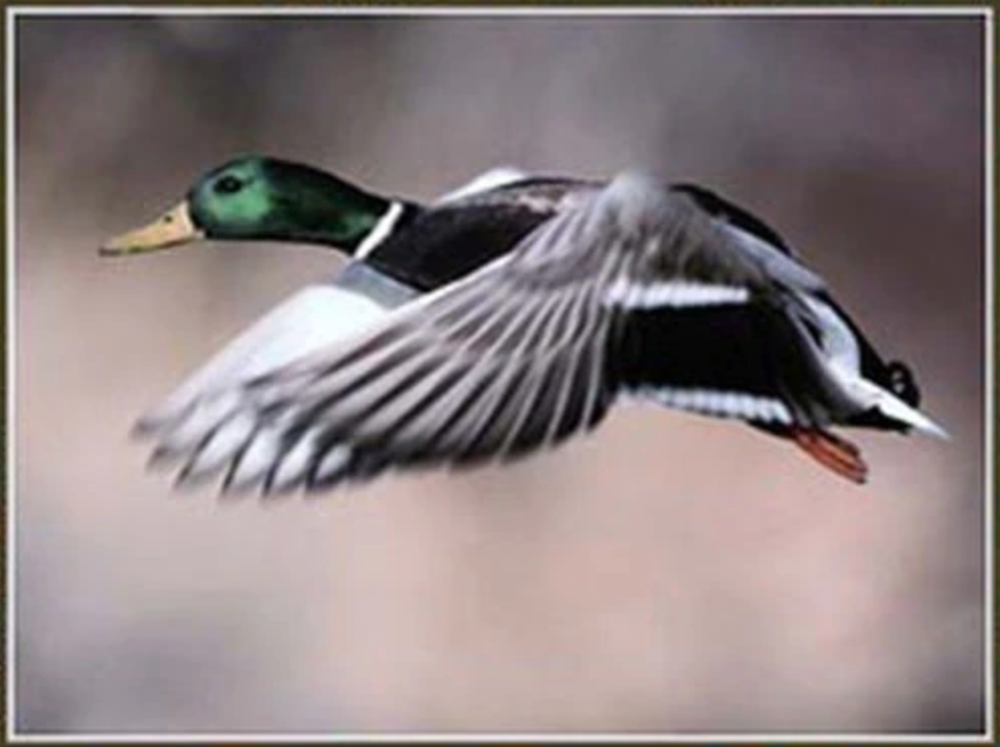
30 Years After the Lead Ban, Is Steel Better?
The most dramatic press release ever dropped on outdoor writers and editors began with words to the effect that never before had news of such grave consequences been issued to sportsmen. It was the early 1970s, and various studies had indicated that ingestion of lead shot pellets was causing massive die-offs of some waterfowl species. Mounting evidence that lead poisoning was killing ducks, or that lead ingestion was lowering their resistance to fatal diseases such as avian cholera, compelled the U.S. Fish and Wildlife Service (USFWS) to announce that after a specified date, lead shot would no longer be allowed for waterfowl hunting.
Winchester Arms took immediate action and initiated an in-depth research program to determine the effectiveness of what was then considered the only viable alternative to lead shot-steel. Part of Winchester’s steel shot test program involved simulating flying ducks by rigging live ducks on a wire that “flew” them past a mechanically mounted and fired shotgun loaded with steel shot. The stricken ducks were examined and X-rayed. Pertinent data such as fatality ratio was then fed into a computer.
Unfortunately, the findings fell into the hands of an otherwise uninformed public relations flack in Winchester’s East Coast office, who took one look at the infant data technicians were assembling to build a computer model and issued the infamous press release.
The key word in the release was “crippling.” The initial data of Winchester’s live duck tests showed a high incidence of ducks being crippled or living for a substantial period of time before dying. Using Winchester’s bare-bones steel shot test data, one could speculate that as many ducks would be lost to crippling as were being lost to lead poisoning, or more. Thus the “crippling effect” became a rallying cry among hunters and sportsmen’s organizations, who now joined an anti-steel-shot crusade in increasing numbers.
Gun Issues
Another complaint about steel shot was that Winchester’s data showed that steel shot loads expanded the chokes in their test guns and that the hard shot scored the barrel walls. This news outraged lovers of fine shotguns. To be sure, steel shot did disfigure shotgun barrels. Of course, no one mentioned that such barrels could be, or perhaps already had been, ruined by using modern lead-shot magnum loads. Another often expressed fear was that if the Feds and state game agencies got away with forcing waterfowlers to use steel shot, would they make us use steel shot for upland hunting? Or even trap or skeet? Surely it would be the end of all wing-shooting.
During the 1960s, Winchester had franchised a number of shooting clubs under its banner in order to attract newcomers to wing-shooting games. To do so it offered club members the use of Winchester-owned shotguns and cheap ammo. If you looked closely at those boxes of club ammo you’d see two interesting notations: “Super Ferro” and “Use only in club-owned guns.” Ferro means the shells were loaded with iron shot. The obvious reason was because iron shot was cheaper than lead. At the Winchester Gun Clubs the iron-shot-loaded ammo went unnoticed because scores at trap and skeet were essentially the same as with lead shot. (Remember this.)
Like it or not, once it became evident that steel shot or an acceptable nontoxic substitute was to become the law, ammo companies rolled up their sleeves and began to develop workable steel-shot ammo in earnest.
Initial Problems
Basically, they faced two problems. The physical problem was finding a way to protect shotgun barrels from the harder-than-lead steel pellets. Loading techniques would also have to be developed to put the maximum weight of steel shot in a shotshell casing. Since steel is lighter than lead, an ounce and a quarter of steel shot would require more space in the shell than an equal weight of lead. But by simp reducing the thickness of the wad column, there was room for more shot, and even more space could be made by using denser propellants. Combining these advances is what allows today’s ammo-makers to offer 11/4 ounces of steel shot in 23/4-inch, 12-gauge shotshells and proportionally heavier charges in 3-inch and 31/2-inch ammo and heavy 10-gauge loads.
The problem of steel shot scratching shotgun bores was solved by using thicker shot cups that cushioned the shot and acted as a barrier between the shot column and barrel wall. Damage to chokes was likewise either reduced or eliminated by using thicker shot cups, plus gunmakers were now tempering new screw-in chokes specifically for steel shot. Along the way it was discovered that steel shot patterns beautifully and that less choke is needed to produce the dense patterns that waterfowlers love.
Shot Physics 101
The ballistics answer to the steel-shot problem is founded in physics and the laws of motion. Everyone remembers the fundamentals from high school. When applied to shot pellets it goes like this: If you have two spheres of equal diameter but of different weights, and set them in motion at equal velocity, the heavier sphere will retain its velocity (call it energy if you want) better than the lighter sphere. And there you have the fundamental difference between lead and steel shot.
So let’s make some real ballistics comparisons between lead, which has a specific gravity (S.G.) of 11.35 and iron (steel is an alloy of iron), which has an S.G. of 7.89. The higher the specific gravity, of course, the heavier the metal. For example, gold has an S.G. of 19.32 and would make a wonderful shot.
Let’s say that we fire No. 4 lead and steel-shot pellets at a muzzle velocity of 1,300 feet per second (fps). At 40 yards the lead pellet would have a remaining velocity of 747 fps and energy of 4 foot-pound (ft.-lb.). The steel shot, however, would have a remaining velocity of 627 fps and energy of 2 ft.-lb. at 40 yards-only half as much as the lead pellet. Thus, in order to make steel shot as effective as lead we have to either fire it at a higher velocity or use bigger -heavier-steel shot. Let’s suppose we fire the steel shot at 1,500 fps, which yields a 40-yard velocity of 679 fps and increases energy to 2.34 ft.-lb. This obviously isn’t a great improvement, so next we try larger No. 2 steel shot fired at 1,300 fps. The 40-yard velocity is now 678 fps and energy is 3.59 ft.-lb., which is getting closer to that of lead. Finally we up the velocity of the No. 2 steel shot to 1,500 fps and what we get at 40 yards is a remaining velocity of 737 fps and energy of 4.29 ft.-lb., which is virtually identical to the figures for lead shot.
Even as the performance and knowledge of steel shot progressed tremendously beyond those early Winchester tests, some problems remained apparently unsolvable. One was the high price of steel-shot ammo. Time and again I’ve asked ammo company officials why today’s steel-shot loads are so expensive while those old Super Ferro shells sold at Winchester Gun Clubs were so cheap. Their replies usually seem sincere but remain unconvincing.
Another impenetrable barrier to universal acceptance of steel shot is a large body of remaining doubt that steel is the ultimate solution. You need only to skim through the specific gravities of various elements to find metals as heavy as, or even heavier than, lead, and thereby the right stuff to make shot from. But alas, they are either too expensive to be practical (gold for instance) or as toxic as lead or even more so.
A couple of them, though, catch the eye. Bismuth, for instance, has an S.G. of 9.75, which is between iron and lead on the weight scale, yet it’s soft enough to be a barrel-friendly shot. Another eye-catcher is tungsten, with an S.G. of 19.3, which is more than half again as heavy as lead. But both have problems.
Bismuth is rather expensive to produce and convert into shot, but that hasn’t prevented wealthy sportsman-publisher Bob Petersen from bringing bismuth shotshells to market.
Tungsten, one of the hardest of all metals, would be difficult to form into shot, but it offers a fascinating alternative that has been refined and exploited by Federal Cartridge Co. Federal now grinds tungsten into a fine powder and mixes it with powdered iron or steel and then molds it into shot-size pellets that are held together by a polymer. By adjusting the ratio of the tungsten-iron blend, the pellet weight (per size) is very nearly the same as lead. With Federal’s tungsten-polymer shot, the weight of lead is completely duplicated. The chart on page 20 shows how they all compare, using identical-size shot launched at equal velocities.
Bismuth is rather expensive to produce and convert into shot, but that hasn’t prevented wealthy sportsman-publisher Bob Petersen from bringing bismuth shotshells to market. ––Jim Carmichel

